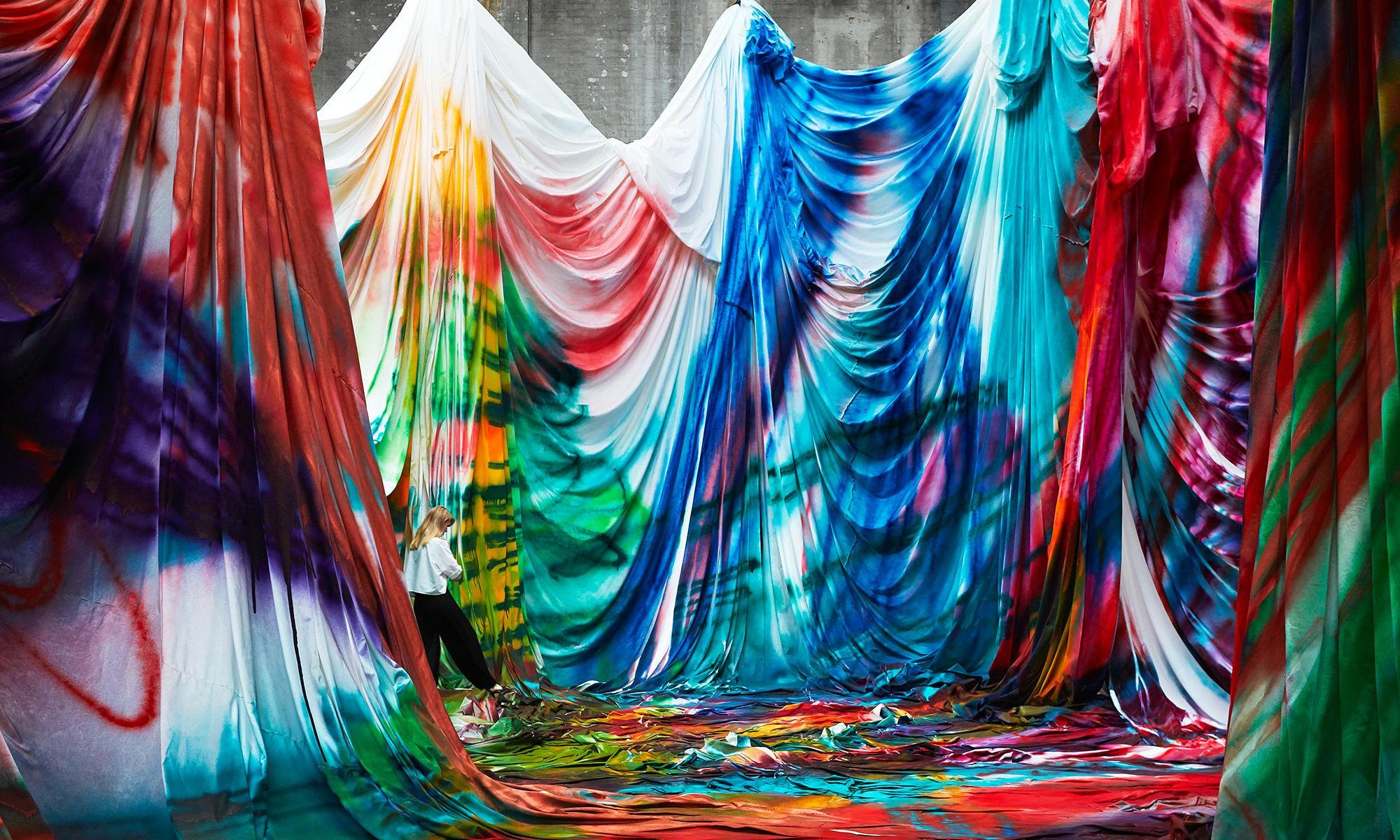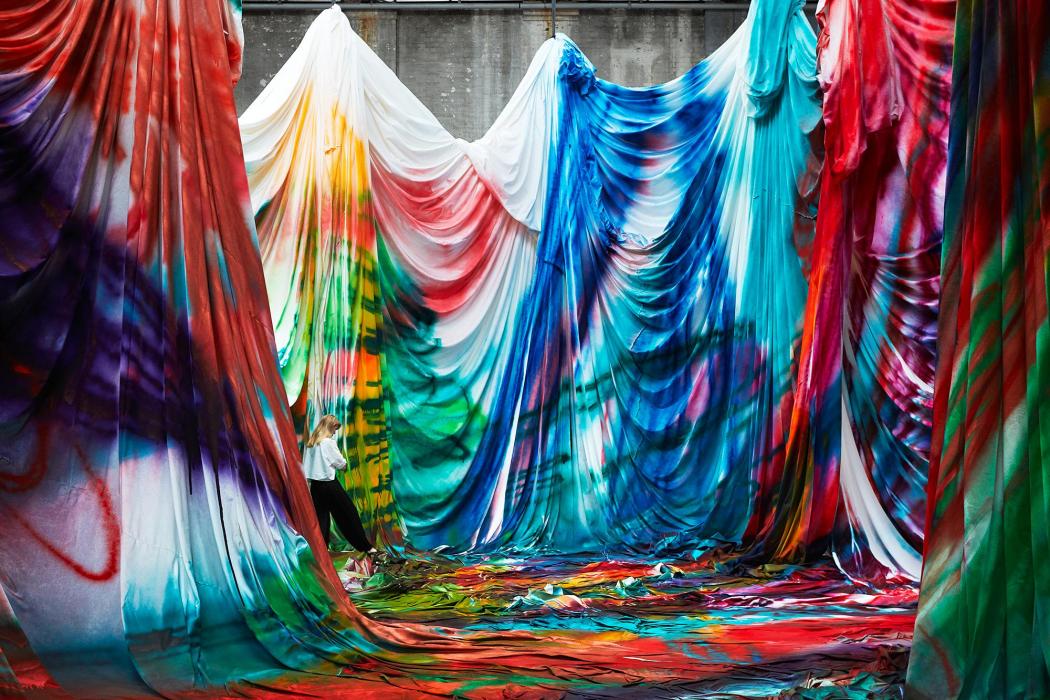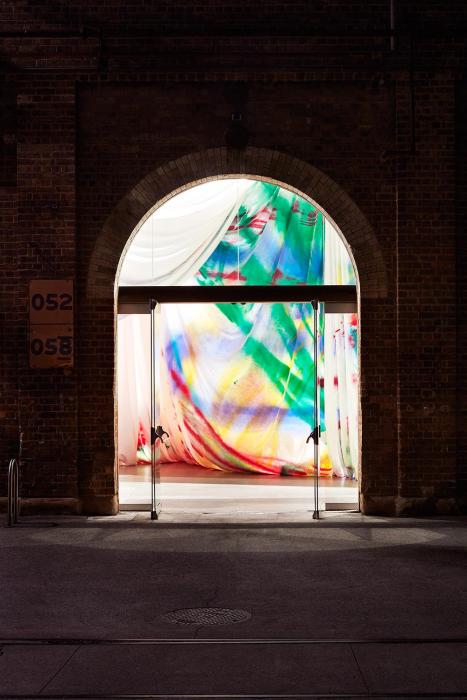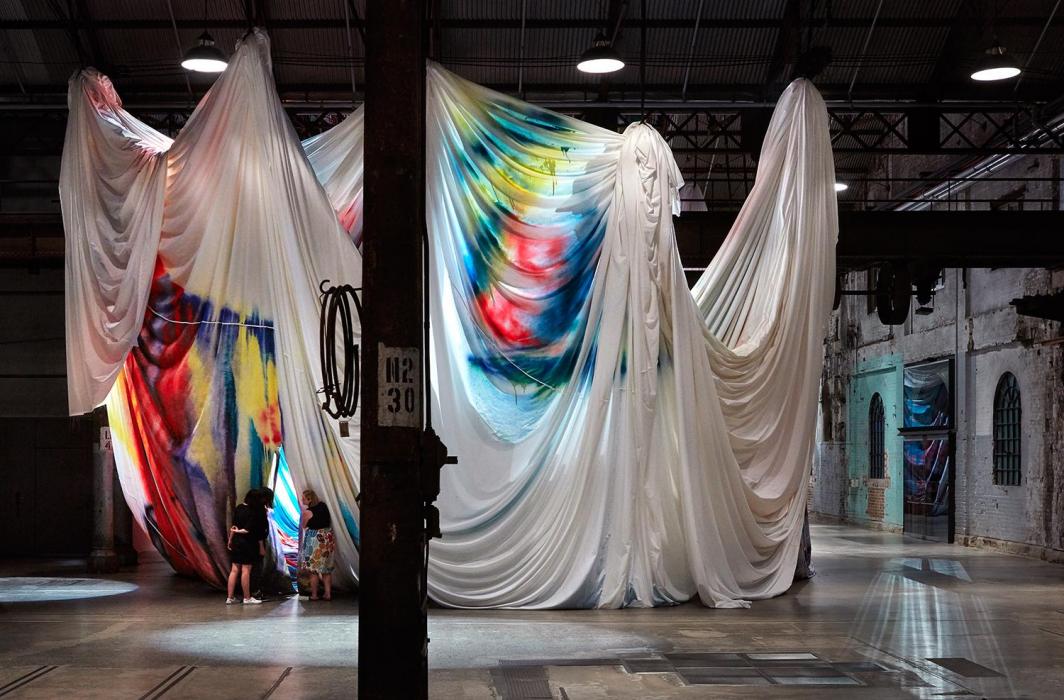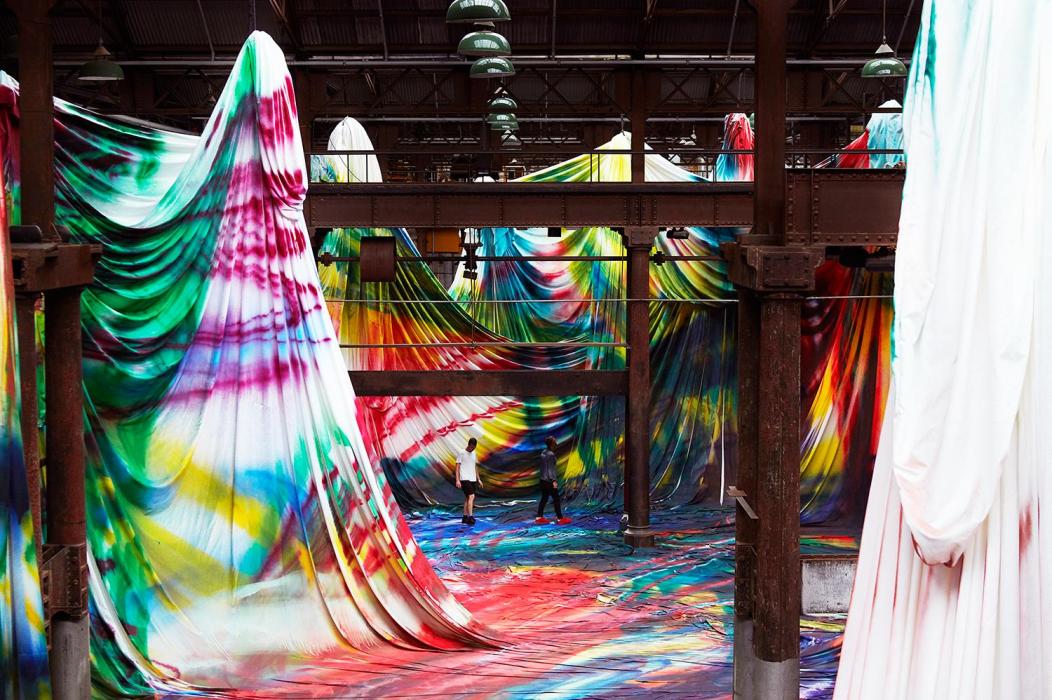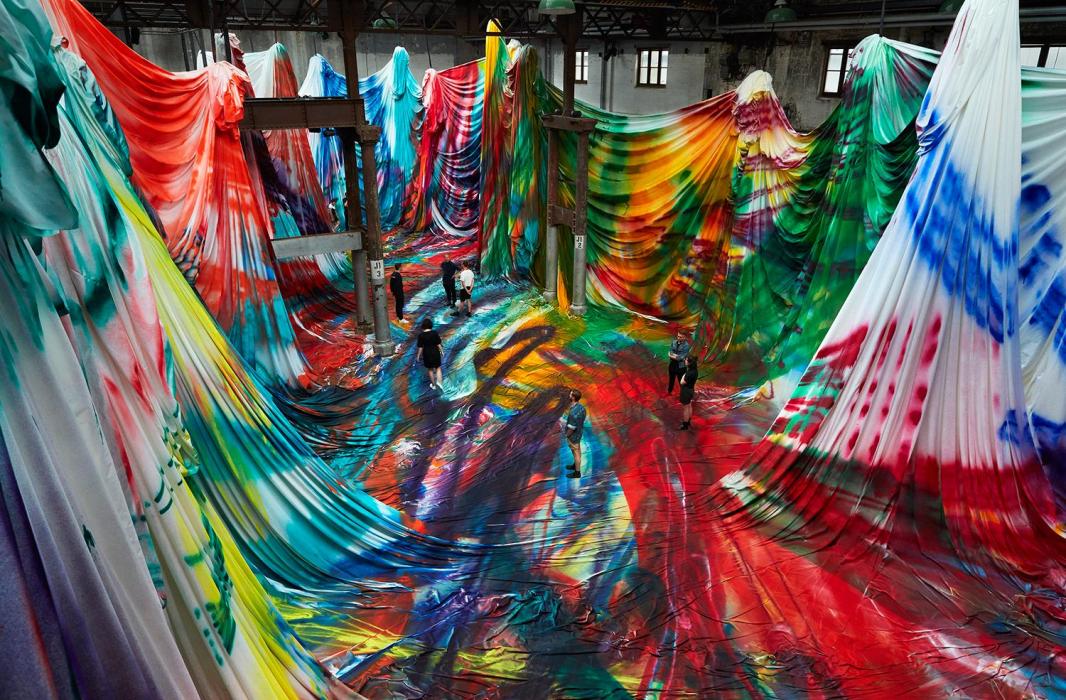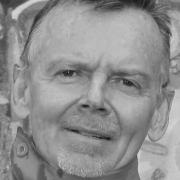Katharina Grosse: The Horse Trotted Another Couple of Metres, Then it Stopped, Carriageworks, Sydney January 6—April 8 2018
When is an installation, a garment, or a building really a painting?
Katharina Grosse’s new work, The Horse Trotted Another Couple of Metres, Then it Stopped is a massive 8000 square metre installation of canvas and spray paint in the main public hall of Carriageworks in Sydney. Ironically it began its life as a crushed napkin that the artist used to conceptualise how she would navigate the strict heritage limitations placed on the site. State laws prevent touching the historic brick walls and cast-iron columns of what was once Eveleigh Railway Workshops, the site of Sydney’s steam age transport revolutions. Much like Frank Gehry’s UTS Building around the corner in Ultimo, which was also conceptualised through crushed paper, the work suggests a destruction and reconstruction of traditional aesthetic practices.
Crushed paper was developed further in Grosse’s Berlin studio to become a maquette of draped fabric that was sent back to Sydney so that tonnes of canvas could be stitched together and engineered into place under the roof of Carriageworks. While ‘canvas’ has become a generic term for the material used by painters as a support surface it is also used industrially as raw material in sails, tents and clothing. It is this multiple possibility of a medium that is evident in the work, stretched to the massive size of a yacht sail or circus tent, while at the same time stooping to embrace the cut and fold of everyday fashionable garments. Before the ocean of canvas was finally painted, it glowed a perfect white, making the building look like it was wearing a giant classical Greek toga.
Many of these aspects set the work apart from Grosse’s usual practice that involves an aesthetic de-facing of contemporary museums and institutional spaces. This often involves an ecstatic disregard of good form where paint disturbs all boundaries and overflows onto walls, floor, lighting, air conditioning, every aspect of a previously untouchable institutional infrastructure. Instead, the current work has become a massive drop sheet folded onto itself to create a womb-shaped room within a room, a laboratory of colour cordoned off from an untouchable past reaching for an unknown and tentative future.
From the outside, the work has the ominous sense of something primitive and sacred, its size and shape suggesting the megalithic formations that dot central Australia. However the main feature of the work is experienced by entering a mysterious interior, which involves finding the right ‘rabbit hole’ entrance amongst the myriad folds of fabric spilling down from the ceiling. Once inside, there is the sense of being immersed within a massive theatrical backdrop, of becoming a small player in a gigantic abstract drama. This involves the wonder of colour, feeling clothed in it, as if it were a huge Dior dress, chromatically bunched and draped around the building so as to create the irresistible self-appreciation of a fitting room. One of the notable side effects of the show is the enormous number of selfies posted on social media of viewers posing as you would in front of Uluru or a famous personality.
At a conceptual level the work asks the question, when is something that doesn’t present as a painting actually work as a painting in disguise? Grosse freely talks about the work as if it were a painting. In fact it is a painting in a very literal way, in that it is made of canvas and paint, much like any painting hanging in a gallery or domestic space. However in this case there is no stretcher to pull it into quadrilateral alignment and there is no fully frontal window-like view on the work where all can be seen in a glance. Consequently there is a temporal theatrical element to the work that gives it a sense of being alive, something more than a painterly image, continually opening up new relationships with space, architecture, fashion, theatre, the life world of the city.
In fact at a pedestrian level the installation is alive. The whole massive thing moves, at the pace of a glacier, but it moves! Because it is walked on, it shifts like a sand dune, not through wind or gravity, but because of the repeated gentle impact of feet. This guides drapes and mounds of canvas in a slow gyroscopic movement around the space revealing new cracks and clefts in colours spilling from the roof.
Ultimately the work shows that painting is a changing pact between artist, medium and audience, that is always under negotiation, never fully faithful to the past, always flirting with something other than itself. As such painting is less a thing than it is a place, a field of possibilities, a way of seeing around corners into the future scenography of what painting might become.

